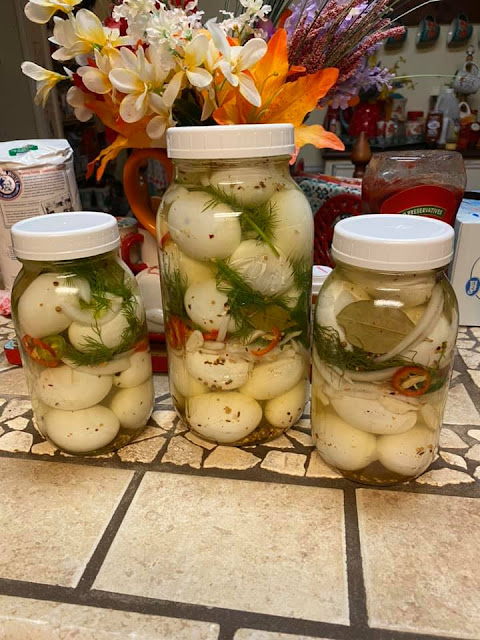Preserving Pasta Perfection: The Art of Homemade Canned Spaghetti for Convenient and Delicious Meals
For over four decades, a seasoned canner has been perfecting the art of homemade canned spaghetti, creating a delicious and convenient option for anytime meals.
With a few simple tricks and shortcuts, they have mastered the process of preserving their own sauce and tender spaghetti noodles in jars. In this article, we'll delve into their cherished recipe and step-by-step canning method, ensuring that you too can enjoy the flavorful convenience of homemade canned spaghetti.
Related: Homemade Blueberry Muffin Mix in a Jar: Easy and Delicious Breakfast Delights
Recipe: Homemade Canned Spaghetti
Ingredients:
- - Homemade spaghetti sauce (recipe below)
- - Thin spaghetti noodles
- - Canning jars and lids
Related: Homemade Caramel Coffee Creamer: Indulgent Bliss in Every Sip
Homemade Spaghetti Sauce:
- Ingredients:
- - Tomatoes (fresh or canned)
- - Garlic, minced
- - Onion, finely chopped
- - Olive oil
- - Italian seasoning (dried basil, dried oregano, dried parsley)
- - Salt and pepper to taste
- Instructions:
1. In a large pot, heat olive oil over medium heat. Add the minced garlic and chopped onion, sautéing until fragrant and translucent.
2. Add the tomatoes, crushing them with your hands or using a blender for a smoother texture.
3. Stir in the Italian seasoning, salt, and pepper to taste.
4. Simmer the sauce over low heat for approximately two hours, stirring occasionally to enhance the flavors.
Canning Process:
1. Prepare the spaghetti noodles by parboiling them until they are slightly undercooked. This will ensure they retain their texture when canned. Drain the noodles and set them aside.
2. Sterilize the canning jars and lids according to the manufacturer's instructions.
3. Add approximately 1/2 cup of the homemade spaghetti sauce to the bottom of each jar.
4. Layer the parboiled spaghetti noodles on top of the sauce, leaving a little space at the top of the jar for expansion during processing.
5. Fill each jar with additional sauce, leaving a recommended headspace of 1 inch.
Related: Homemade Brown Sugar: A Sweet Revelation You'll Never Buy Again
6. Wipe the jar rims clean to ensure a proper seal, place the lids on top, and tighten the bands fingertip tight.
7. Process the jars in a pressure canner at 10 pounds of pressure for 60 minutes. Adjust the processing time for altitude if necessary.
8. Once the processing time is complete, carefully remove the jars from the canner and place them on a towel-lined countertop to cool.
9. Allow the jars to cool completely, undisturbed, for 12 to 24 hours. Listen for the satisfying "pop" sound as the lids seal.
With a wealth of canning experience spanning over four decades, this seasoned canner has perfected the art of homemade canned spaghetti.
By following their time-tested recipe and method, you too can enjoy the convenience of having delicious spaghetti meals at your fingertips. From the rich homemade sauce to the perfectly cooked thin spaghetti noodles, each jar holds the essence of a well-prepared pasta dish. Embrace the shortcuts and tips learned over time, and let the flavors of homemade canned spaghetti bring joy to your meals for years to come. Whether you're a seasoned canner or a novice, this recipe is sure to become a treasured addition to your culinary repertoire.



















Comments
Not safe at all you can't can noodles
ReplyDeleteAnswer me this: if there is no safe way to can noodles, then how has Chef Boyardee and others managed to do it all these years?
DeleteI do it all the time I've been doing it for years feeding it to my grandkids and never had a problem my theory is if you can find it in the store you can make it yourself
DeleteNo safe tested recipe for canning pasta! This could make someone sick.
ReplyDelete... and yet there are canned noodles in the way of Chef Boyardee and more on the store shelves.
DeleteCommercial facilities have industrial equipment that can reach higher temperatures more quickly than what can be achieved at home. Pasta, rice, or noodles should not be added to canned products. The starch interferes with heat transfer to the center of the jar allowing bacteria to be left.
ReplyDeleteGotta love the pearl-clutchers! Don’t like it, don’t do it. It’s her kitchen and her rules.
ReplyDeleteMaybe while you are catching your breath, you could use the time to do actual research on preservation methods from around the world, historical evidence, a smidge of real science-not speculation, and add in your own common sense. Then if you still have the same opinion, move on.
I'm going to try this. Mostly because Proverbs 31 Homestead on Facebook doesn't want anyone to do it.
ReplyDeleteI have been canning for many years and I am so excited to have something new to try. I appreciate you sharing your recipe with us and I can’t wait to make it!!!
ReplyDeleteGina - V.T.